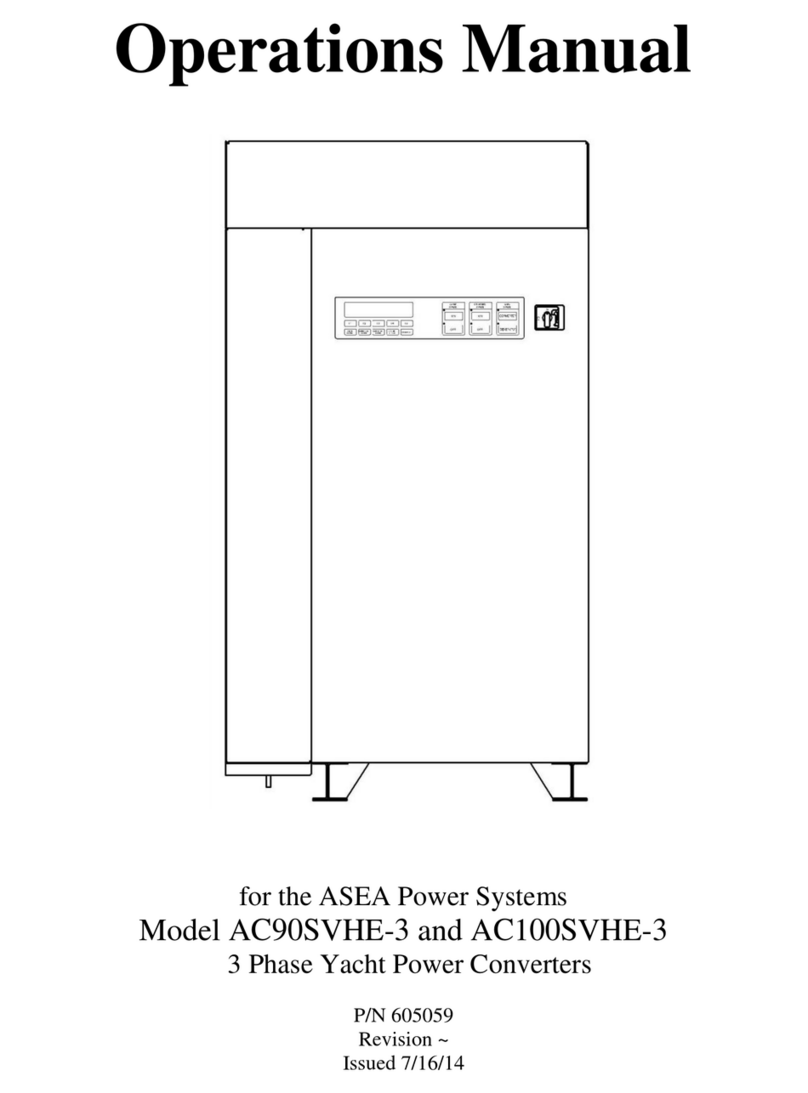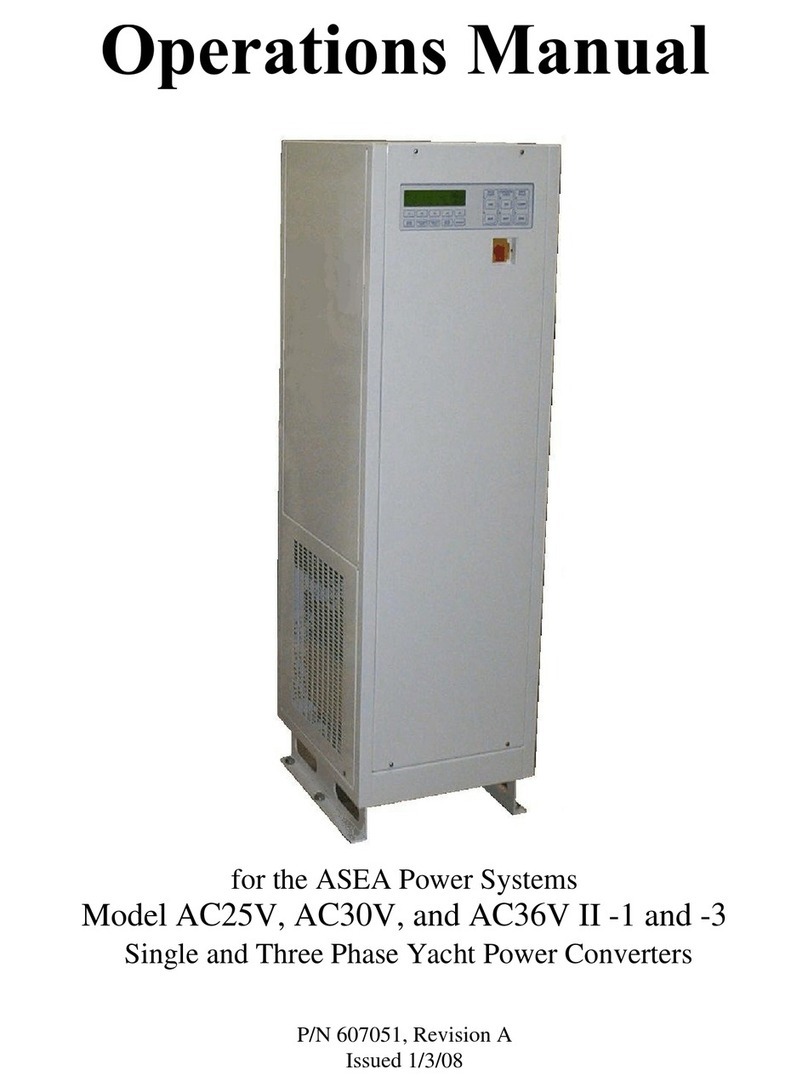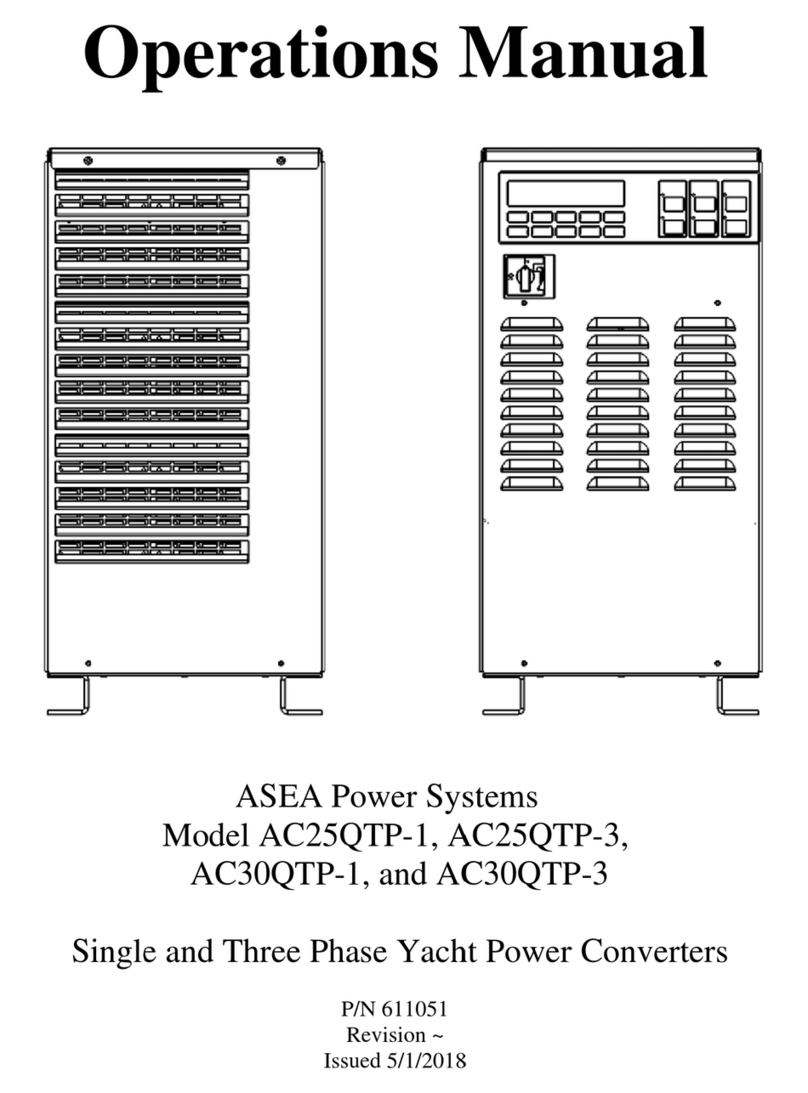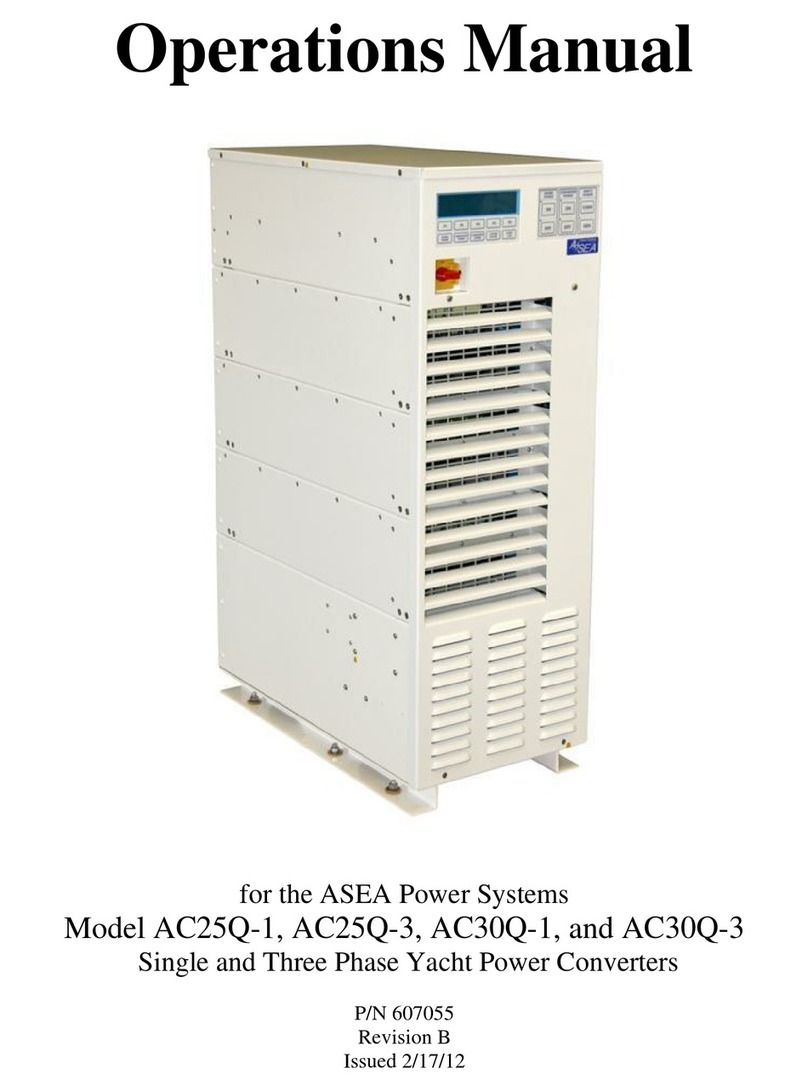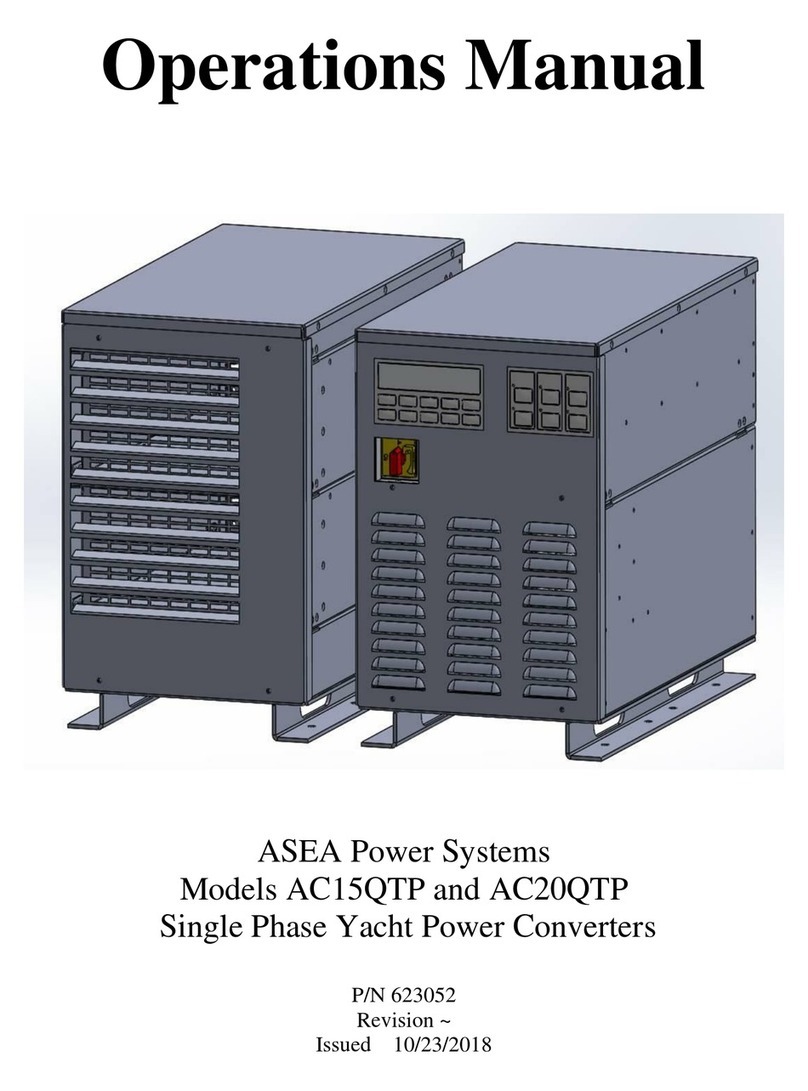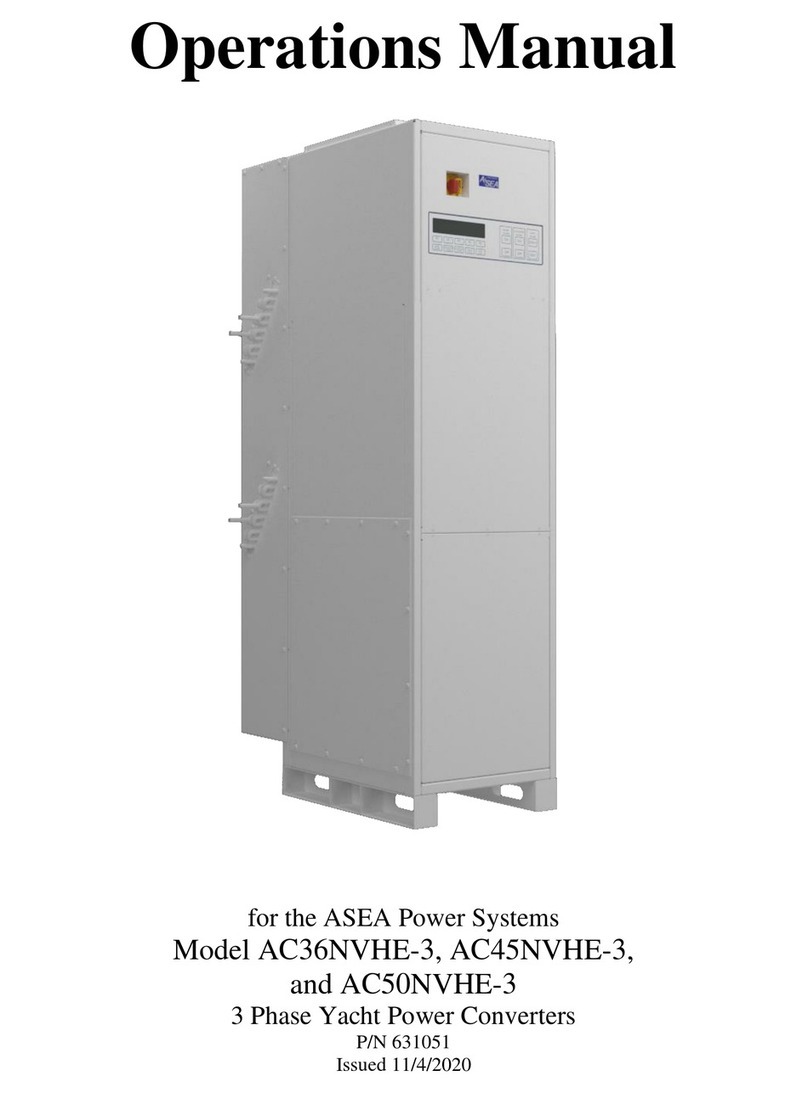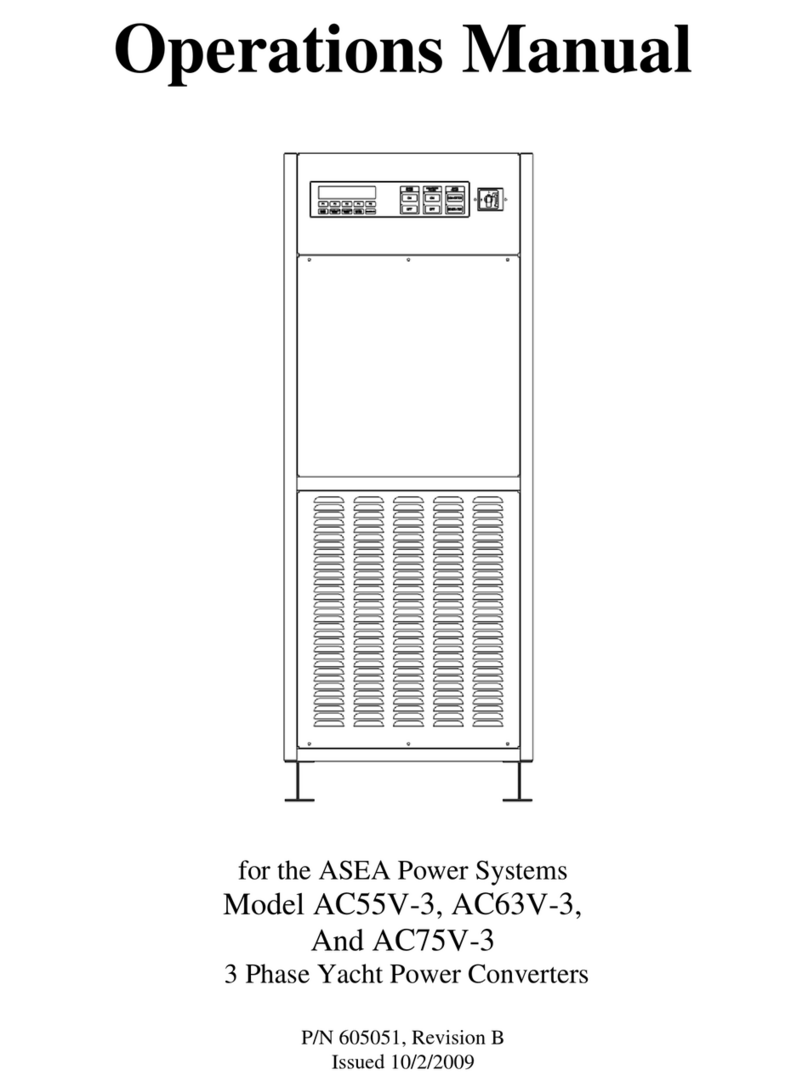
AC90LC-3, AC100LC-3, and AC125LC-3 Operations Manual....5
7 SOFTWARE FEATURES.................................................................................................43
7.1 GENERAL.............................................................................................................43
7.2 LOAD MANAGEMENT.......................................................................................43
7.3 LOAD MANAGEMENT OPERATION...............................................................45
7.3.1 Shore Cord Alarm, Single, Master, and Slave converters .........................45
7.3.2 Shore Cord Setup, Single, Master, or Slave Converters............................46
7.3.3 Voltage Droop, Single or Master Converters.............................................47
7.3.4 Automatic Transfer to Generator, Single or Master Converters (Seamless
Transfer installed)......................................................................................48
7.3.5 Quick Setup of Shore Cord Alarm, Single, Master, or Slave Converters..49
7.4 GENERATOR FREQUENCY ANALYSIS..........................................................50
7.5 CONVERTER OUTPUT IMPEDANCE CONTROL...........................................50
7.6 AGC CONTROL...................................................................................................51
7.7 kW-HOUR METER AND MAXIMUM POWER LEVEL DISPLAY.................52
7.8 CONVERTER OUTPUT VOLTAGE CONTROL...............................................53
7.9 EVENT LOG .........................................................................................................54
8 DIAGNOSTICS.................................................................................................................56
9 CALIBRATION.................................................................................................................59
10 MAINTENANCE ..............................................................................................................61
11 MSDS SHEET, COOLANT OIL.......................................................................................62
12 INTERNATIONAL POWER FORM REFERENCE........................................................69
FIGURES
1 SYSTEM BLOCK DIAGRAM ...........................................................................................8
2 OIL-TO-WATER COOLING SYSTEM BLOCK DIAGRAM.........................................10
3 OUTPUT DERATING ......................................................................................................14
4 MECHANICAL OUTLINE, FRONT AND SIDE ............................................................17
5 MECHANICAL OUTLINE, BASE...................................................................................18
6 WATER LINE INSTALLATION......................................................................................20
7 INPUT AND OUTPUT CONNECTIONS ........................................................................23
8 N/A.........................................................................................................................................
9 FRONT PANEL CONTROLS...........................................................................................28
10 RS-232C PINOUT.............................................................................................................39
11 RS-485 CONNECTIONS..................................................................................................40
12 STATUS WORD BIT DEFINITIONS ..............................................................................58












